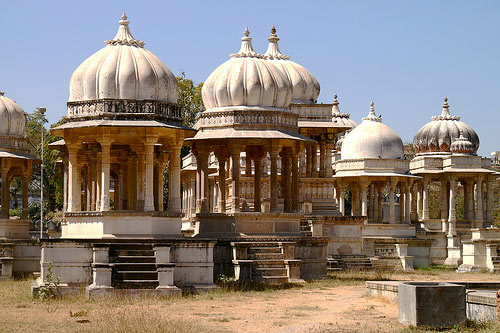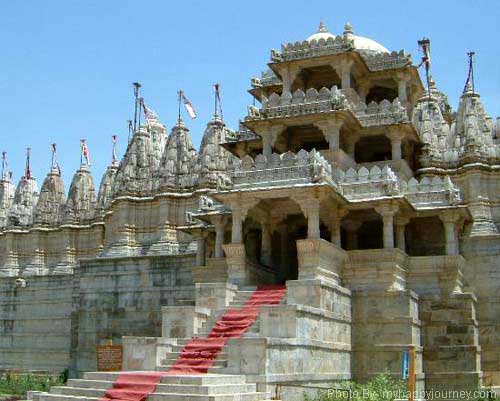Best of India Tours
- Golden Triangle Tour- Best of India & Nepal
- Classical Rajasthan
India Cultural Tours
- Images of North India- Karnataka Heritage
- Rajasthan & Goa Tour
Discover India Tours
- Grand India Tour- North to South India
- Central to South India
Rajasthan Tours
- Classical Rajasthan Tour- Golden Triangle Tour
- Grand Mughal Tour
India Luxury Trains
- Palace on Wheels- The Golden Chariot
- India Deccan Odyssey
- The Indian Maharaja
- Royal Rajasthan on Wheels
Nepal Tours
- Glimpses of Nepal- Buddhist Pilgrimage
- Nepal River Rafting
- Destinations of Nepal
- Nepal General Info
India Wildlife Tours
- North India Wild Life- South India Wildlife
Tibet Tours
- Tibet Monastery Tours- Explore Tibet
- Destinations of Tibet
Spa & Yoga Tours
- Ananda in Himalayas- Yoga & Meditation
Adventure Tours
- Manali Safari Tour- Himalayan Trekking
- Horse Safari
Udaipur
Ajmer
![]() Alwar
Alwar
![]() Bharatpur
Bharatpur
![]() Bijaipur
Bijaipur
![]() Bikaner
Bikaner
![]() Bissau
Bissau
![]() Bundi
Bundi
![]() Deogarh
Deogarh
![]() Jaipur
Jaipur
![]() Jaisalmer
Jaisalmer
![]() Jalore
Jalore
![]() Jodhpur
Jodhpur
![]() Kota
Kota
![]() Mount Abu
Mount Abu
![]() Pushkar
Pushkar
![]() Ranthambore
Ranthambore
![]() Sariska
Sariska
![]() Shekhawati
Shekhawati
![]() Udaipur
Udaipur

Located in the Aravalli ranges of Rajasthan, the city of Udaipur is situated at a distance of about 405 km from the state capital Jaipur. The city is well connected through air, rail, and road to other important cities of India like Jaipur, Delhi, and Mumbai. Udaipur is a fascinating blend of sights, sound and experiences. Right from the medieval times, the city has been an inspiration for poets, painters and writers. Founded in 1559 and named after Maharana Udai Singh.
Udaipur became the capital of the Sisodia dynasty whose earlier capital was Chittor. According to legend, the Maharana was out hunting one day when he met a holy man meditating on a hill overlooking the Lake Pichola. The hermit blessed theMaharana and told him to built a palace at that very spot, as it would be well protected. The Maharana followed the holy man”s advice and Udaipur came into being. Today, Udaipur is a one of the better-known tourist destinations of India. Summers in Udaipur are quite hot with temperature going up to 38°C during the day. Winters are relatively pleasant with temperature remaining at around 28°C during day and up to 11°C during night. The winters are the best time to visit historic city.
Sightseeing
If Jaipur is a city in pink, Udaipur is a study in white. The city is famous for its palaces, lake, museums, temples, and gardens. The City Palace and Museum is considered as the largest palace complex in Rajasthan and its museum has stunning collection of objects collected by different Maharanas of Udaipur over the centuries. The Picholia Lake, Udai Sagar, and Pratap Sagar are some of the most beautiful lakes in the state. Some other attractions in the city are the Jagdish Temple, Saheliyon Ki Bari, Jag Mandir, Bhartiya Lok Kala Mandir, Pratap Memorial, and Ahar Museum.
Excursions
The entire Mewar region of Rajasthan is full of legends of bravery and the courage. Surprisingly, the warring clans of these regions also created some of the most splendid architectural wonders in India. Ranakpur is famous for its Jain Temples while Eklingi is known for its temple dedicated to Lord Shiva. Nagda is also known for its temple complex while Chittorgarh and its mighty fort has taken many pages in the history of India. Kumbhalgarh Fort is the best example of fort architecture of Rajasthan while Ghanerao nearby has beautiful red sandstone havelis. Some other excursion points from Udaipur are Nathdwara, Rajsamand, Jaisamand, Sardarsamand, Haldighati, Dungarpur, and Narlai.
Excursions for Udaipur
City Palace & Museum
Towering over the Pichola Lake on a hill lies the imposing City Palace, a majestic marvel of architecture. It is the largest palace complex in Rajasthan. Although a conglomeration of buildings constructed by various Maharanas over a period of time, the complex still manages to retain a uniformity of design. The palace has many courtyards, pavilions, terraces, corridors, rooms and hanging gardens. One can get a magnificent view of the lake and the city from the upper terraces of the palace The main part of the palace has now been preserved as a museum. You get to see the beautiful mosaics of peacocks at the Mor Chowk, the glass and mirror work in the Manak Mahal and Moti Mahal, and a beautiful collection of miniatures in Krishna Vilas

Jagdish Temple

Built in 1651 by Maharana Jagat Singh, the temple is located at about 150 metres north of the entrance to the City Palace. The temple, built in Indo-Aryan style, is the largest temple of Udaipur. Here you can have a look at a black stone image of Lord Vishnu, who has been enshrined here as Jagannath, lord of the universe. A brass image of Garuda lies in front of the temple.
Saheliyon-Ki-Bari
To the north of the city lies Saheliyon-Ki-Bari, a garden of the maids of honour. This small ornamental garden has many fountains, delightful lotus pools, chiselled kiosks and marble elephants.
Jag Mandir

Commenced by Maharana Karan Singh, the island palace takes its name from Maharana Jagat Singh who had made a number of additions to it. The island has an impressive chhatri (cenotaph) carved from grey blue stone and is flanked by a row of enormous stone elephants. It is believed that Prince Khurram (later Shah Jahan) was given refuge here when he was leading a revolt against his father Jehangir. From the balconies, you get a superb view of the lake and the city.
Bhartiya Lok Kala Mandir
Bharatiya Lok Kala Mandir, the Indian folk arts museum, has interesting exhibits that include folk dresses, ornaments, puppets, masks, dolls, folk musical instruments, folk deities and paintings. You can also watch puppet shows that are held here daily.

Pichola Lake

About 4 km in length and 3 km wide, the picturesque Pichhola Lake is fringed with hills, gardens, havelis, ghats and temples. The lake was enlarged by Maharana Udai Singh II after he founded the city. The two islands on the lake, Jag Mandir and Jag Niwas, present a magnificent sight. One of the major attractions here are the boat rides. The boats leave regularly from the City Palace jetty (known as Bansi Ghat) and take you on a pleasant trip around the lake including a visit to Jag Mandir Island and other ghats around the lake.
Pratap Memorial
On the top of Moti Magri overlooking the Fateh Sagar Lake is the bronze statue of Maharana Pratap on his horse Chetak. Known as Pratap Smarak (memorial), the statue is kept in a well laid out garden. Legend has it that Chetak jumped an abyss of extraordinary width in the battle of Haldighati to save his master’s life.

Fateh Sagar

This beautiful lake, constructed in 1678, lies to the north of Lake Pichola. The lake, built by Maharana Fateh Singh, is overlooked by a number of hills on three sides and the Pratap Memorial on the north. The east bank of the lake has a pleasant drive along it. In the middle of the lake is Nehru Park—a lovely garden island that has a boat-shaped restaurant in it. The island can be accessed only by boat.
Udai Sagar
The Udai Sagar Lake lies 15 km east of Udaipur. It was built Maharana Udai Singh in order to provide the city with secure water supply in case of a war besides agricultural and leisure purposes. The lake is around 4 km long and 2.5 km wide with a maximum depth of around 9 metres. Today, the waters of the lake are used in the nearby zinc smelter.

Ahar Museum

About 3 km from Udaipur lies Ahar, the ancient capital of the Sisodias. A small government museum has on display a rare collection of antiquities including earthen pots, iron objects and other art items excavated in the region. You can also have a look at an impressive cluster of cenotaphs of the Maharanas of Mewar that stand nearby.
Dungarpur
Nestled in the foothills of the Aravallis, around 120 km off Udaipur, Dungarpur has an interesting topography, ranging from wild and rugged terrain in the northeast to fertile plains of alluvial soil in the southwest. The main attractions in the town are the Udai Bilas Palace, Juna Mahal, Gaib Sagar Lake, Vijay Raj Rajeshwar Temple, and Government Archaeological Museum.

Eklingji

Eklingji is a small town famous for its temples. The Eklingji Temple is dedicated to Shiva, who is regarded to be the guardian deity of the Mewar. The deity was regarded as the virtual ruler by the Maharajas of Mewar who considered themselves to be the regents (dewans) under Eklingji.
Ghanerao
With its red sandstone havelis and a number of old temples, baolis, and marble chattris, Ghanerao is an irresistible place. Founded in 1606 by Gopal Das Rathore, Ghanerao is situated just 5 km beyond the Kumbhalgarh Sanctuary.

Haldighati

Haldighati is a historical place that has now become a symbol of courage and bravery. It hosted the legendary war between Rana Pratap and Akbar in 1576. Haldighati is situated at a distance of around 60 km from Udaipur.
Jaisamand Lake
With an area of 15 km by 10 km, it is a vast artificial lake situated at a distance of around 52 km southeast of Udaipur. The lake is surrounded by the summer palaces of the Ranis of Udaipur dating back to 17th centuries. The main attractions here are Hawa Mahal and Ruti Rani palaces.

Kumbhalgarh

Though little known, Kumbhalgarh has one of the finest examples of defensive fortifications in entire Rajasthan. There is a palace and several temples that are worth visiting. In addition, a stroll along the walls of the fort gives great panoramic views. Kumbhalgarh is a must visit for anyone looking forward to experience the best of Rajasthani fort architecture. The Kumbhalgarh Wildlife Sanctuary is situated to the west of the fort. The sanctuary has enabled the endangered wolf to breed and support besides providing shelter to the leopard, sloth, chowsingha, sambhar, hyena, Kumbhalgarh flying squirrel, crocodiles, and a good number of bird species. Kumbhalgarh is situated at a distance of around 63 km from Udaipur.
Nagda
Nagda has three the ruined Jain temples—Adbhutji Temple and the Vaishnavite Sas-Bahu Temples—all dating back to the 11th century. Nagda is situated in the vicinity of Eklingi and can be reached by bicycles.

Narlai

Also known as Rawal Narlai, this place is situated 25 km beyond Kumbhalgarh Fort. It is famous for its 17th-century fort. It is also a renowned Hindu and Jain pilgrimage.
Nathdwara
Nathdwara, 48 kilometres from Udaipur, is an important Hindu pilgrim centre. It is also famous for nurturing the glorious tradition of Pichwal paintings.

Rajsamand Lake

The lake is situated 56 km north of Udaipur on National highway 8 at Kankroli. A vast expanse of water, the lake was the result of a dam constructed on the Gomati River by Maharana Raj Singh I (1653-6180). There are ornamental arches and pavilions lining the lake.
Ranakpur
Ranakpur, 98 kilometres away, boasts of some of the most exquisite Jain temples in the country.

Sardarsamand

Situated at a distance of around 200 km from Udaipur on the road to Jodhpur, Sardarsamand is named after the great grandfather of Maharaja Gaj Singh of Jodhpur. The Sardarsamand Palace (now converted into a hotel) and Balsamand Lake are two other highlights of the place
Fact File
 Area:37 sq. km
Area:37 sq. km
 Population: 3,66,000 (1991)
Population: 3,66,000 (1991)
 Altitude :577 metres above sea level
Altitude :577 metres above sea level
 Best Time to Visit: September–March
Best Time to Visit: September–March
 Languages: Hindi, Rajasthani, English
Languages: Hindi, Rajasthani, English
 STD Code:0294
STD Code:0294




